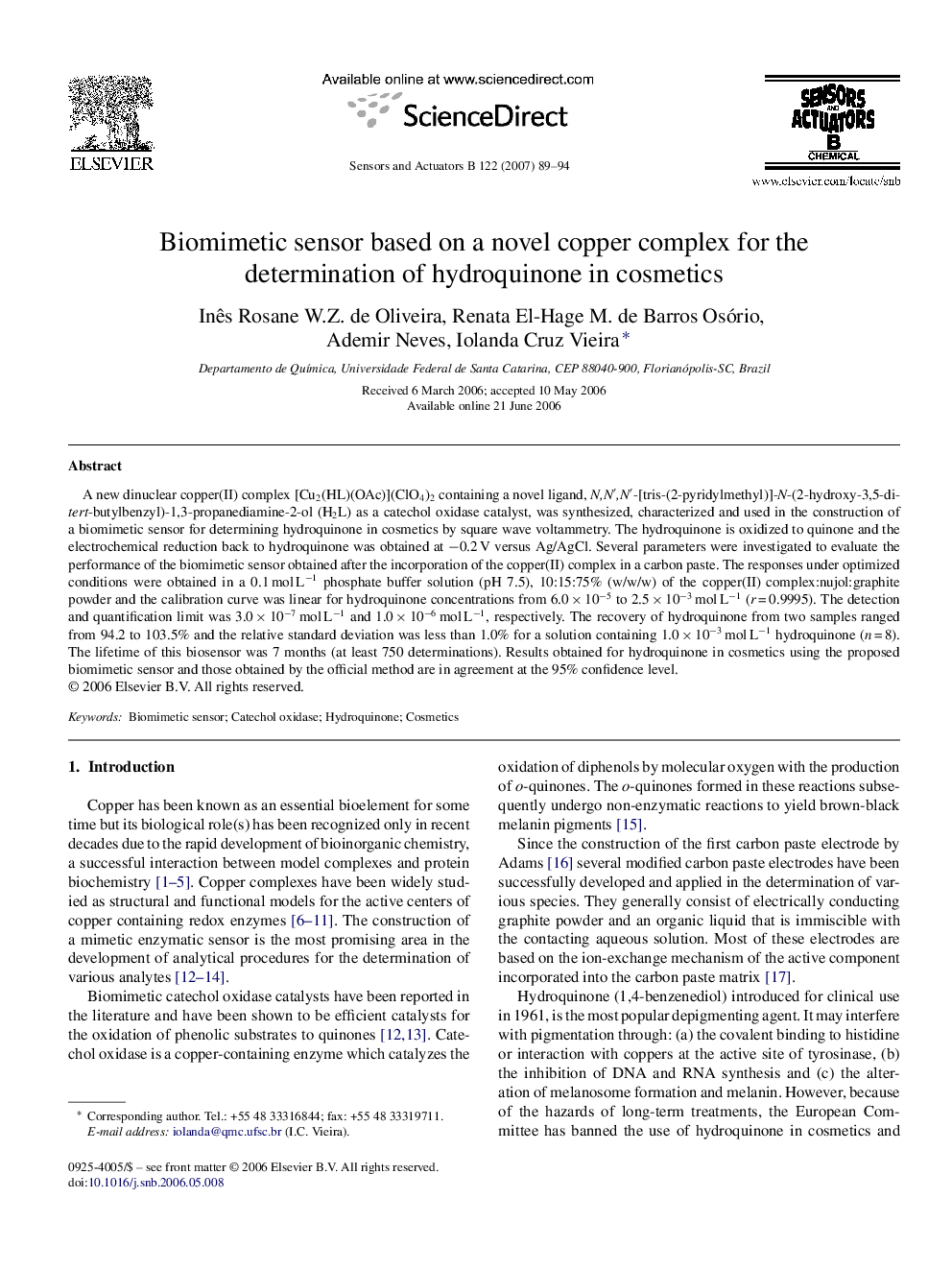| Article ID | Journal | Published Year | Pages | File Type |
|---|---|---|---|---|
| 744704 | Sensors and Actuators B: Chemical | 2007 | 6 Pages |
A new dinuclear copper(II) complex [Cu2(HL)(OAc)](ClO4)2 containing a novel ligand, N,N′,N′-[tris-(2-pyridylmethyl)]-N-(2-hydroxy-3,5-di-tert-butylbenzyl)-1,3-propanediamine-2-ol (H2L) as a catechol oxidase catalyst, was synthesized, characterized and used in the construction of a biomimetic sensor for determining hydroquinone in cosmetics by square wave voltammetry. The hydroquinone is oxidized to quinone and the electrochemical reduction back to hydroquinone was obtained at −0.2 V versus Ag/AgCl. Several parameters were investigated to evaluate the performance of the biomimetic sensor obtained after the incorporation of the copper(II) complex in a carbon paste. The responses under optimized conditions were obtained in a 0.1 mol L−1 phosphate buffer solution (pH 7.5), 10:15:75% (w/w/w) of the copper(II) complex:nujol:graphite powder and the calibration curve was linear for hydroquinone concentrations from 6.0 × 10−5 to 2.5 × 10−3 mol L−1 (r = 0.9995). The detection and quantification limit was 3.0 × 10−7 mol L−1 and 1.0 × 10−6 mol L−1, respectively. The recovery of hydroquinone from two samples ranged from 94.2 to 103.5% and the relative standard deviation was less than 1.0% for a solution containing 1.0 × 10−3 mol L−1 hydroquinone (n = 8). The lifetime of this biosensor was 7 months (at least 750 determinations). Results obtained for hydroquinone in cosmetics using the proposed biomimetic sensor and those obtained by the official method are in agreement at the 95% confidence level.
